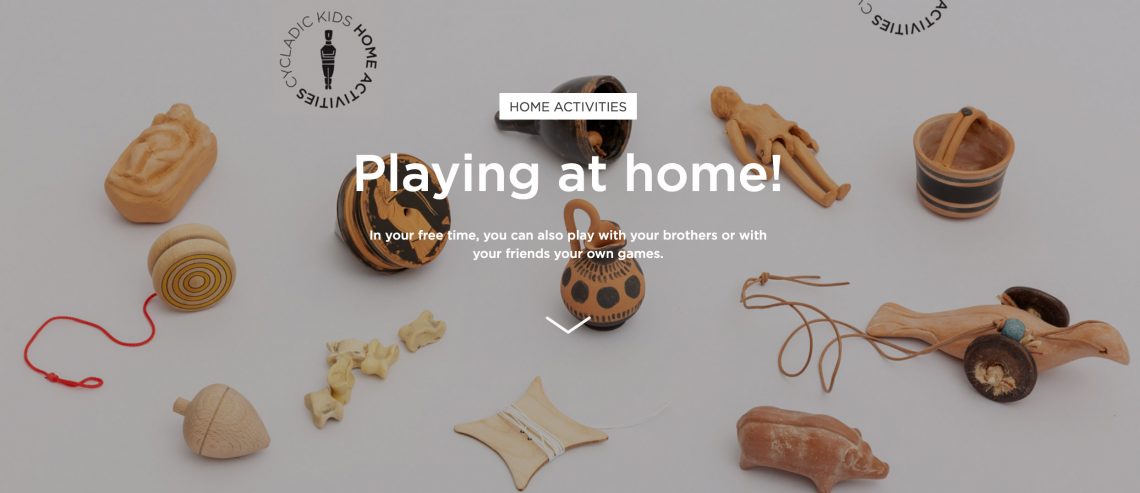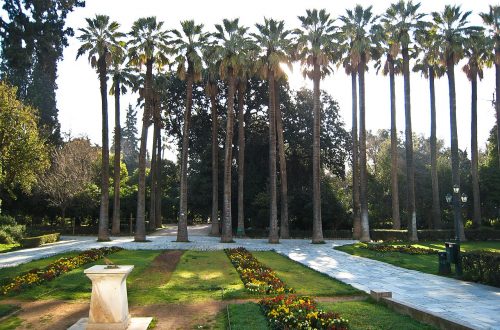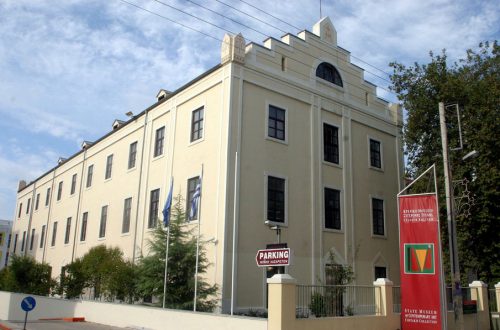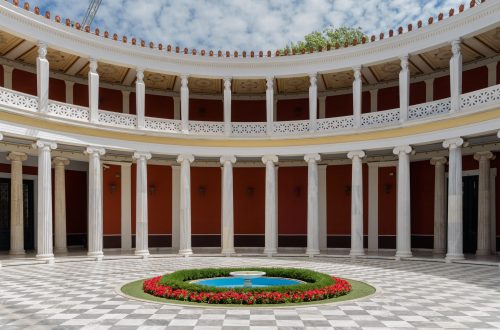
Playing at home! Cycladic Art Museum (Athens, Greece)
The Cycladic Art Museum, through its website, invited children to play online; learning information about life in ancient Greece (children’s toys, food, clothing)
Background
The Cycladic Art Museum, is a living cultural institution in the centre of Athens that focuses on the promotion of the ancient civilizations of the Aegean and Cyprus, with special emphasis on Cycladic art of the 3rd millennium BC. It is a Legal Entity under Private Law supervised by the Ministry of Culture withοut state funding.
The Museum has operated since 1986 to house and display the private collection of antiquities of Dolly and Nikolaos Goulandris. Since then, it has expanded significantly and today holds one of the most comprehensive private collections of Cycladic art in the world, with representative specimens of the world-famous Cycladic marble figurines.
The nucleus of the Museum’s Cycladic Art Collection is the marble figurines depicting naked human figures that fascinate the visitor with their simplicity and abstractness, elements that have inspired some of the 20th-century’s greatest artists, such as Konstantin Brancusi, Amedeo Modigliani, Alberto Giacometti, Barbara Hepworth, and Henry Moore.
Description
During the lockdown the Cycladic Art Museum, offered users the opportunity to play and engage in creative activities online. These activities (puzzles, games, constructions) were aimed at children 5-12 years old and were available free of charge on the Museum’s website in Greek and English so that children not only from Greece but also from abroad could take part.
Impact
Combining creative activities and historical information about ancient Greece in a simple and understandable language for children, the Cycladic Art Museum, offered a complete experience to users, during the period when the Museums remained closed. In this way the Museum managed to maintain the interest of its visitors even from afar but also to remain active during the quarantine, while gaining new relationships with the public in various parts of Greece and abroad, and therefore future visitors.
Also, it functioned as an advertising tool since the participants on the occasion of the offered activities, wanted to learn more about the Museum but also to take part in its activities.
Interpretation
Utilizing digital tools, the Cycladic Art Museum, has created an interactive, online educational material based on its exhibits, so that children who were at home during the quarantine can spend their creative time and get to know exhibits and important information about ancient Greece.
References
- Museum web site: https://cycladic.gr/en/page/paizontas-sto-spiti?fbclid=IwAR1qnZpoouHyoN8iu-7NQaU-UH5Yo7dwGwF1GWddNvNopNTwJG6lBW8cphY
- https://www.athina984.gr/2020/03/23/paizontas-sto-spiti-online-programma-toy-moyseioy-kykladikis-technis/
Author
- Greek Cultural Institute (Greece)
Header photograph
Museum of Cycladic Art, Athens




